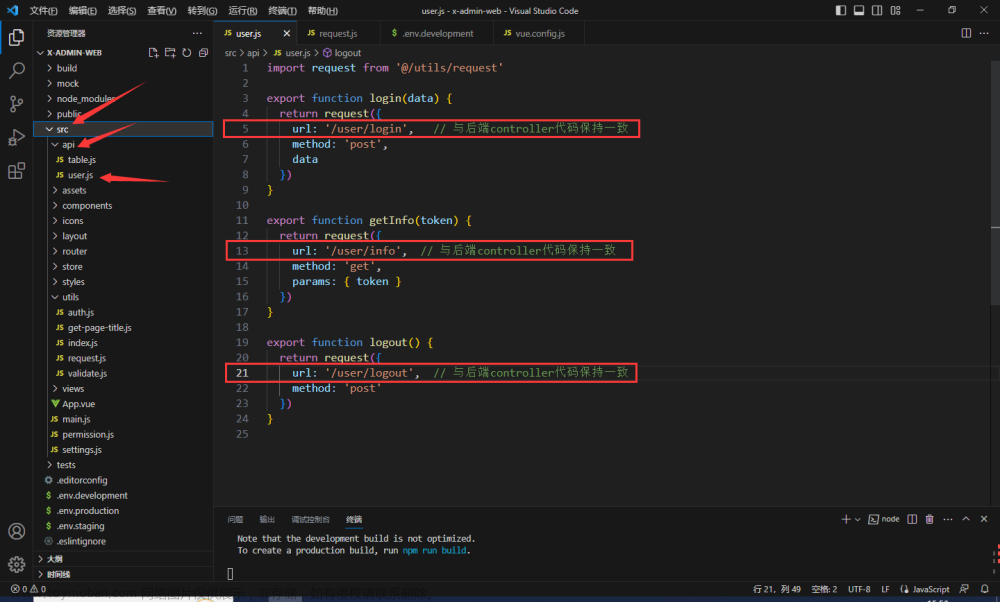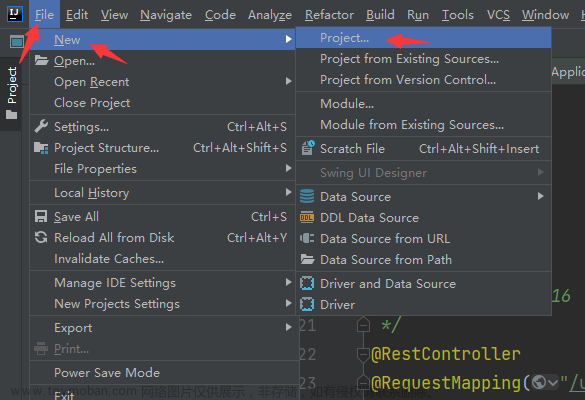优质博文:IT-BLOG-CN
一、Spring Security 简介
Spring Security是一个能够为基于Spring的企业应用系统提供声明式的安全访问控制解决方案的安全框架。它提供了一组可以在Spring应用上下文中配置的 Bean,充分利用了Spring IoC,DI(控制反转 Inversion of Control ,DI:Dependency Injection 依赖注入)和AOP(面向切面编程)功能,为应用系统提供声明式的安全访问控制功能,减少了为企业系统安全控制编写大量重复代码的工作。
二、Spring Security 入门Demo
【1】创建Maven工程(war形式):spring-security-demo
【2】修改pom.xml目录,如下:
<!-- 集中定义依赖版本号 -->
<properties>
<junit.version>4.12</junit.version>
<spring.version>4.2.4.RELEASE</spring.version>
<pagehelper.version>4.0.0</pagehelper.version>
<servlet-api.version>2.5</servlet-api.version>
<dubbo.version>2.8.4</dubbo.version>
<zookeeper.version>3.4.7</zookeeper.version>
<zkclient.version>0.1</zkclient.version>
<mybatis.version>3.2.8</mybatis.version>
<mybatis.spring.version>1.2.2</mybatis.spring.version>
<mybatis.paginator.version>1.2.15</mybatis.paginator.version>
<mysql.version>5.1.32</mysql.version>
<druid.version>1.0.9</druid.version>
<commons-fileupload.version>1.3.1</commons-fileupload.version>
<freemarker.version>2.3.23</freemarker.version>
<activemq.version>5.11.2</activemq.version>
<security.version>3.2.3.RELEASE</security.version>
<solrj.version>4.10.3</solrj.version>
<ik.version>2012_u6</ik.version>
</properties>
<dependencies>
<dependency>
<groupId>org.springframework</groupId>
<artifactId>spring-core</artifactId>
<version>${spring.version}</version>
</dependency>
<dependency>
<groupId>org.springframework</groupId>
<artifactId>spring-web</artifactId>
<version>${spring.version}</version>
</dependency>
<dependency>
<groupId>org.springframework</groupId>
<artifactId>spring-webmvc</artifactId>
<version>${spring.version}</version>
</dependency>
<dependency>
<groupId>org.springframework</groupId>
<artifactId>spring-context-support</artifactId>
<version>${spring.version}</version>
</dependency>
<dependency>
<groupId>org.springframework</groupId>
<artifactId>spring-test</artifactId>
<version>${spring.version}</version>
</dependency>
<dependency>
<groupId>org.springframework</groupId>
<artifactId>spring-jdbc</artifactId>
<version>${spring.version}</version>
</dependency>
<dependency>
<groupId>org.springframework.security</groupId>
<artifactId>spring-security-web</artifactId>
<version>4.1.0.RELEASE</version>
</dependency>
<dependency>
<groupId>org.springframework.security</groupId>
<artifactId>spring-security-config</artifactId>
<version>4.1.0.RELEASE</version>
</dependency>
<dependency>
<groupId>javax.servlet</groupId>
<artifactId>servlet-api</artifactId>
<version>2.5</version>
<scope>provided</scope>
</dependency>
</dependencies>
<build>
<plugins>
<!-- java编译插件 -->
<plugin>
<groupId>org.apache.maven.plugins</groupId>
<artifactId>maven-compiler-plugin</artifactId>
<version>3.2</version>
<configuration>
<source>1.7</source>
<target>1.7</target>
<encoding>UTF-8</encoding>
</configuration>
</plugin>
<plugin>
<groupId>org.apache.tomcat.maven</groupId>
<artifactId>tomcat7-maven-plugin</artifactId>
<configuration>
<!-- 指定端口 -->
<port>9090</port>
<!-- 请求路径 -->
<path>/</path>
</configuration>
</plugin>
</plugins>
</build>
注意:如果只是给自己的项目中嵌入Spring Security安全框架,只需要添加如下两个jar包即可。
<dependency>
<groupId>org.springframework.security</groupId>
<artifactId>spring-security-web</artifactId>
<version>4.1.0.RELEASE</version>
</dependency>
<dependency>
<groupId>org.springframework.security</groupId>
<artifactId>spring-security-config</artifactId>
<version>4.1.0.RELEASE</version>
</dependency>
【3】创建web.xml文件(通过Spring Security拦截需要处理的请求和引入Spring Security的配置文件)。
<?xml version="1.0" encoding="UTF-8"?>
<web-app xmlns:xsi="http://www.w3.org/2001/XMLSchema-instance"
xmlns="http://java.sun.com/xml/ns/javaee"
xsi:schemaLocation="http://java.sun.com/xml/ns/javaee http://java.sun.com/xml/ns/javaee/web-app_2_5.xsd"
version="2.5">
<!-- 引入spring-security框架的配置文件 -->
<context-param>
<param-name>contextConfigLocation</param-name>
<param-value>classpath:spring-security.xml</param-value>
</context-param>
<listener>
<listener-class>
org.springframework.web.context.ContextLoaderListener
</listener-class>
</listener>
<!-- 通过spring-security 内置的拦截器 springSecurityFilterChain 拦截 /* 的请求,名称不能修改,安全框架的入口配置 -->
<!-- 所有的请求通过拦截器(DelegatingFilterProxy)拦截后,找名为 springSecurityFilterChain 类进行逻辑处理,此类是spring security安全框架中所包含的类 -->
<filter>
<filter-name>springSecurityFilterChain</filter-name>
<filter-class>org.springframework.web.filter.DelegatingFilterProxy</filter-class>
</filter>
<filter-mapping>
<filter-name>springSecurityFilterChain</filter-name>
<url-pattern>/*</url-pattern>
</filter-mapping>
</web-app>
【4】创建Spring Security配置文件:spring-security.xml(与 web.xml中引入的配置文件对应),代码中有配置的详细说明注解。
<?xml version="1.0" encoding="UTF-8"?>
<!-- 此配置将Spring Seucrity设置成了默认标签,其他使用时,需要添加如下前缀beans或dubbo等 -->
<beans:beans
xmlns="http://www.springframework.org/schema/security"
xmlns:beans="http://www.springframework.org/schema/beans"
xmlns:dubbo="http://code.alibabatech.com/schema/dubbo"
xmlns:xsi="http://www.w3.org/2001/XMLSchema-instance"
xsi:schemaLocation="http://www.springframework.org/schema/beans http://www.springframework.org/schema/beans/spring-beans.xsd
http://code.alibabatech.com/schema/dubbo http://code.alibabatech.com/schema/dubbo/dubbo.xsd
http://www.springframework.org/schema/security http://www.springframework.org/schema/security/spring-security.xsd">
<!-- 登录页面不能拦截 none任何角色都可访问
如果你没有设置登录页security="none" ,将会出现以下错误 :"重定向次数过多"因为登录页会被反复重定向-->
<http pattern="/*.html" security="none"></http>
<http pattern="/css/**" security="none"></http>
<http pattern="/img/**" security="none"></http>
<http pattern="/js/**" security="none"></http>
<http pattern="/plugins/**" security="none"></http>
<!-- 注意:如果是用户申请登录名的请求也不能拦截 -->
<http pattern="/seller/add.do" security="none"></http>
<!-- 拦截页面 -->
<!-- use-expressions -为是否使用 Spring 表达式语言( SpEL ),默认为true ,如果开启,则拦截的配置应该写成以下形式
<intercept-url pattern="/**" access="hasRole('ROLE_USER')" />
-->
<http use-expressions="false">
<!--
/* 表示的是该目录下的资源,只包括本级目录不包括下级目录
/** 表示的是该目录以及该目录下所有级别子目录的资源
-->
<intercept-url pattern="/**" access="ROLE_SELLER" />
<!-- form-login:开启表单登录,默认登录请求/login可以通过配置修改默认请求
always-use-default-target:指定了是否在身份验证通过后总是跳转到default-target-url属性指定的URL。
authentication-failure-url:登录失败,跳转页面 -->
<form-login login-page="/login.html"
default-target-url="/index.html"
authentication-failure-url="/login_error.html"
always-use-default-target="true" />
<!-- csrf disabled="true" 关闭csrf ,如果不加会出现错403 这种一般会自动生成在请求头信息中:
'X-CSRF-TOKEN'(相当于一个校徽)防止跨站点攻击,但只能jsp实现,html不能实现,因此需要关闭此功能
CSRF(Cross-site request forgery)跨站请求伪造,
也被称为“One Click Attack”或者Session Riding,通常缩写为CSRF或者XSRF,是一种对网站的恶意利用。-->
<csrf disabled="true" />
<!-- 当页面中存在嵌入式iframe时,需要配置hears -->
<headers>
<frame-options policy="SAMEORIGIN" />
</headers>
<!-- 登出,页面只需要发送/logout请求就可会触发 也可以修改默认的处理,例如logout-url=""可以修改登出的请求-->
<logout />
</http>
<!-- Spring Security中 用户登录时认证管理器 -->
<!-- Spring Security是如何完成身份认证的?
①、用户名和密码被过滤器获取到,封装成Authentication,通常情况下是UsernamePasswordAuthenticationToken这个实现类。
②、AuthenticationManager 身份管理器负责验证这个Authentication。
③、认证成功后,AuthenticationManager身份管理器返回一个被填充满了信息的(包括上面提到的权限信息,身份信息,细节信息,但密码通常会被移除)Authentication实例。
④、SecurityContextHolder安全上下文容器将第3步填充了信息的Authentication,
通过SecurityContextHolder.getContext().setAuthentication(…)方法,设置到其中。 -->
<authentication-manager>
<!-- user-service-ref 指向用户认证业务处理类,需要实现UserDetailsService接口-->
<!-- 如果测试,不想从数据库中获取用户,可以直接配置一个用户名和密码 ,特换掉如下authentication-provider内的配置即可。 -->
<authentication-provider>
<user-service>
<user name="admin" password="123456" authorities="ROLE_USER"/>
</user-service>
</authentication-provider>
<!-- <authentication-provider user-service-ref="userDetailServiceImpl">
对密码进行bcrypt加密,比较时需要解密后处理,bcrypt与MD5不同,
MD5加密后相同的密码生成相同的16位字符创,bcrybt相同的密码加密后生成不同的30位字符串,
相当于MD5+盐
<password-encoder hash="bcrypt"></password-encoder>
</authentication-provider> -->
</authentication-manager>
<!-- <beans:bean id="userDetailServiceImpl" class="com.pinyougou.shop.service.UserDetailServiceImpl">
当自己的项目需要使用另一个项目中的服务类时 ,需要通过dubbo引入项目 dubbo标签
<beans:property name="sellerService" ref="sellerService"></beans:property>
</beans:bean> -->
<!-- 引用dubbo sellerService服务:供登录用户业务处理类使用 -->
<!-- <dubbo:application name="pinyougou-shop-web" />
<dubbo:registry address="zookeeper://192.168.159.129:2181" />
<dubbo:reference id="sellerService"
interface="com.pinyougou.sellergoods.service.SellerService"></dubbo:reference> -->
</beans:beans>
【5】需要自己创建:login.html(登录页面 如下)、index.html(登录成功跳转页面)、login_error.html(登录失败跳转页面)
<!DOCTYPE html>
<html>
<head>
<meta charset="UTF-8">
<title>登陆</title>
</head>
<body>
--欢迎登陆我的系统--
<form action="/login" method="post">
用户名:<input name="username"><br>
密码:<input name="password"><br>
<button>登陆</button>
</form>
</body>
</html>
三、项目实战中,后台业务逻辑实现重要代码摘取,供实战中使用
【1】配置文件中配置的,登录时用户名和密码的业务逻辑处理类(实现UserDetailsService:框架自带的接口),注意:普通demo不需要此部分,主要用于真是环境登录逻辑的处理。
public class UserDetailServiceImpl implements UserDetailsService {
//当通过配置文件的形式,引入服务类时需要设置set方法。
private SellerService sellerService;
public void setSellerService(SellerService sellerService) {
this.sellerService = sellerService;
}
@Override
public UserDetails loadUserByUsername(String username) throws UsernameNotFoundException {
//GrantedAuthority : 定义用户角色,需要实现的接口
List<GrantedAuthority> list =new ArrayList<>();
//用户添加角色,SimpleGrantedAuthority可以定义用户角色,实现了GrantedAuthority接口,
//格式必须以(ROLE_)开头
list.add(new SimpleGrantedAuthority("ROLE_SELLER"));
//从数据库中获取用户信息。
TbSeller seller = sellerService.findOne(username);
if(seller != null) {
//返回username:传过来的参数。seller.getPassword:数据库中获取到的用户密码。
//list:用户的所有角色,可以从数据库中获取
return new User(username, seller.getPassword(), list);
}else {
return null;
}
}
}
【2】BCrypt加密过程(配置中说明了BCrypt与MD5的区别)。
@RequestMapping("/add")
public Result add(@RequestBody TbSeller seller){
try {
//BCrypt加密使用的对象BCryptPasswordEncoder
BCryptPasswordEncoder cryptPasswordEncoder = new BCryptPasswordEncoder();
//使用encode方法对传入的密码加密,返回30位的字符串
String encode = cryptPasswordEncoder.encode(seller.getPassword());
//业务处理:接入对象中
seller.setPassword(encode);
//调用服务层,入库
sellerService.add(seller);
return new Result(true, "增加成功");
} catch (Exception e) {
e.printStackTrace();
return new Result(false, "增加失败");
}
}
四、当程序中需要用户名时,可通过 SecurityContextHolder 对象获取
☏ SecurityContextHolder用于存储安全上下文security context的信息。当前操作的用户是谁,该用户是否已经被认证,他拥有哪些角色权限…这些都被保存在SecurityContextHolder中。SecurityContextHolder默认使用ThreadLocal策略来存储认证信息。看到ThreadLocal也就意味着,这是一种与线程绑定的策略。Spring Security在用户登录时自动绑定认证信息到当前线程,在用户退出时,自动清除当前线程的认证信息。但这一切的前提,是你在web场景下使用Spring Security。
☏ 因为身份信息是与线程绑定的,所以可以在程序的任何地方使用静态方法获取用户信息。一个典型的获取当前登录用户的姓名的例子如下所示:getAuthentication() 返回了认证信息。
@RequestMapping("/name")
public Map<String, String> getName(){
//获取登录名
String name = SecurityContextHolder.getContext().getAuthentication().getName();
Map<String, String> map = new HashMap<>();
map.put("loginName", name);
return map;
}
☏ Authentication源码:文章来源:https://www.toymoban.com/news/detail-757170.html
package org.springframework.security.core;// <1>
public interface Authentication extends Principal, Serializable { // <1>
Collection<? extends GrantedAuthority> getAuthorities(); // <2>
Object getCredentials();// <2>
Object getDetails();// <2>
Object getPrincipal();// <2>
boolean isAuthenticated();// <2>
void setAuthenticated(boolean var1) throws IllegalArgumentException;
}
【1】Authentication 是Spring Security包中的接口,直接继承自Principal类,而Principal是位于java.security包中的。可以见得,Authentication在Spring Security中是最高级别的身份/认证的抽象。
【2】由这个顶级接口,我们可以得到用户拥有的权限信息列表,密码,用户细节信息,用户身份信息,认证信息。authentication.getPrincipal()返回了一个 Object,我们将Principal强转成了Spring Security中最常用的UserDetails,这在Spring Security 中非常常见,接口返回Object,使用instanceof判断类型,强转成对应的具体实现类。接口详细解读如下:
● getAuthorities():权限信息列表,默认是GrantedAuthority接口的一些实现类,通常是代表权限信息的一系列字符串。
● getCredentials():密码信息,用户输入的密码字符串,在认证过后通常会被移除,用于保障安全。
● getDetails():细节信息,web应用中的实现接口通常为WebAuthenticationDetails,它记录了访问者的ip地址和sessionId的值。
● getPrincipal():最重要的身份信息,大部分情况下返回的是UserDetails接口的实现类,也是框架中的常用接口之一。文章来源地址https://www.toymoban.com/news/detail-757170.html
到了这里,关于SpringBoot——Spring Security 框架的文章就介绍完了。如果您还想了解更多内容,请在右上角搜索TOY模板网以前的文章或继续浏览下面的相关文章,希望大家以后多多支持TOY模板网!







